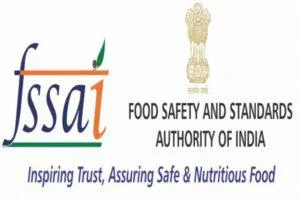
Why in news?
- The Food Safety and Standards Authority of India’s (FSSAI) recent decision to raise the maximum residue limit (MRL) of pesticides in herbs and spices has stirred controversy.
- While the FSSAI argues for increased agricultural productivity, activists and scientists raise concerns about potential health risks and trade implications.
- Let’s delve deeper into this complex issue.
The FSSAI Order: A Tenfold Increase
- Previously, the FSSAI adhered to stricter MRLs, aligning with concerns about pesticide residues in food.
- However, their recent order raised the permissible pesticide limit in herbs and spices from 0.01 mg/kg to 0.1 mg/kg, a tenfold increase.
- This move sparked outrage, with critics highlighting inconsistencies with the FSSAI’s past stance and questioning the data relied upon.
Inconsistencies and Data Concerns
- Opponents point out that the FSSAI’s order contradicts its earlier commitment to using MRLs established by Codex Alimentarius, an international food safety body.
- Additionally, concerns linger about the reliability of data used to justify the increased MRLs.
- Field trials, often commissioned by pesticide companies themselves, raise a potential conflict of interest. Furthermore, the Centre’s Monitoring of Pesticide Residues at the National Level (MPRNL) program doesn’t comprehensively test spices, creating a data gap.
Impact on Consumers and Trade
- Countries with stricter pesticide regulations, like those in Europe, often reject Indian products exceeding their MRLs.
- This has resulted in recent recalls of Indian food products containing excessive pesticide residues.
- A recent example is the ban imposed by Singapore and Hong Kong on Indian spice companies for exceeding permissible limits of the harmful pesticide ethylene oxide.
Understanding Pesticide Poisoning
- Pesticides, while crucial for agriculture, pose health risks when misused or overused.
- Exposure to pesticides can cause various health problems, including cancer, reproductive issues, and damage to the immune and nervous systems.
- Both acute poisoning (from a large, single exposure) and chronic poisoning (from repeated low-dose exposure) are major concerns.
The Role of FSSAI
- The FSSAI, established under the Food Safety and Standards Act, 2006, is responsible for ensuring food safety in India.
- It sets food safety standards, regulates food production and distribution, and conducts research in this field.
- The FSSAI’s mandate includes protecting consumers from harmful foodborne contaminants, including pesticide residues.
The Way Forward
- Finding a balance between agricultural productivity and consumer health is crucial. Here are some potential solutions:
- Investing in Sustainable Practices: Promoting organic farming and integrated pest management (IPM) techniques can reduce reliance on chemical pesticides.
- Strengthening Data Collection: Robust and independent field trials are essential for setting scientifically sound MRLs.
- Enhancing Transparency: The FSSAI should clearly communicate the rationale behind MRL revisions and make data publicly available.
- Consumer Awareness: Educating consumers about safe food choices and empowering them to demand residue-free produce can incentivize market shifts.
- The FSSAI’s decision to raise pesticide limits in herbs and spices requires careful consideration. Prioritizing the health of consumers and adopting sustainable agricultural practices are essential for a robust food safety system in India.
people also ask
Q1: Why did the FSSAI raise pesticide limits in herbs and spices?
Ans: The FSSAI cites the need to increase agricultural productivity as a reason for raising the maximum residue limit (MRL) of pesticides in herbs and spices.
Q2: What are the concerns surrounding this decision?
Ans: Critics worry that higher pesticide residues can harm consumers’ health and lead to rejections of Indian exports by countries with stricter regulations. Additionally, the data used to justify the increased MRLs and potential conflicts of interest are points of contention.
Q3: What is pesticide poisoning, and how can it occur?
Ans: Pesticide poisoning refers to the adverse health effects caused by exposure to pesticides. This exposure can happen through ingestion, inhalation, or skin contact. Acute poisoning results from a single large dose, while chronic poisoning arises from repeated low-dose exposure. Both can cause severe health problems.
Your article helped me a lot, is there any more related content? Thanks!